WebP is a modern image file format developed by Google for displaying images on the web. It is similar to other common image formats like your regular JPG or PNG files.
According to Google, WebP images are 30% smaller in file size compared to an image compressed in JPG or PNG format but with no noticeable difference in quality. Webpages with WebP images would load faster in web browsers.
However, despite these benefits WebP had a slow adoption rate. Apple added support for WebP in it’s Safari browser a decade later in October, 2020.
Presently, most of the desktop and mobile web browsers support this file format. Your browser would display WebP like any other image file formats and you won’t be able to tell the difference.
However, when you download a WebP file on your computer, it will save with a .webp extension. Some apps like Photos in Windows 10 can’t open WebP files. Image Editing apps like Photoshop do not support WebP image editing and you would need plugins to add support for these files.
However, you can convert these images to common file formats like JPG or PNG which are widely supported compared to WebP images. There are multiple ways to convert WebP images to common image formats like JPEG or PNG. Some of the methods are explained below.
Convert using Google’s Webp Decoder.
The WebP format was developed by Google and they also released the WebP encoders and decoders for converting JPG and PNG images to WebP and vice versa. You can use these tools to convert WebP images to JPG files. These tools are open source and free for use.
This method is best for batch converting multiple images at once and works completely offline. Moreover, you don’t have to use any third party apps or convertors. The conversion method is explained in the following steps.
Step 1
You can download all the encoding and decoding tools from this Google Developers page.
The very first link on this page would open the download repository page. You have to download the appropriate version for your system.
If you are using Windows 10 64 bit PC then click on the following link to download the decoder files.
Download for Windows 10 64 bit
Step 2
After downloading the zip file. Right click on it and select Extract All.
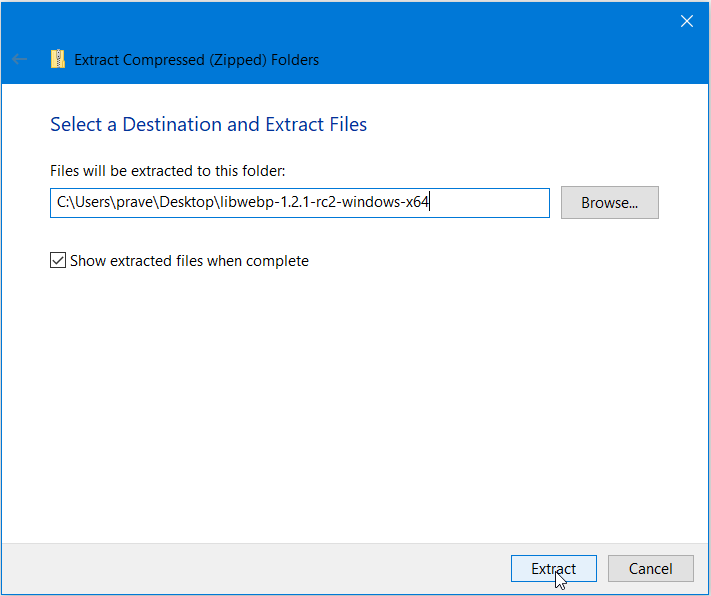
Open the extracted folder. Inside, you would find a sub-folder with the same name. Open that folder and copy the contents of that folder.
Create a new folder on your Desktop and name it CwebpConvert and paste everything you copied inside the CwebpConvert folder.
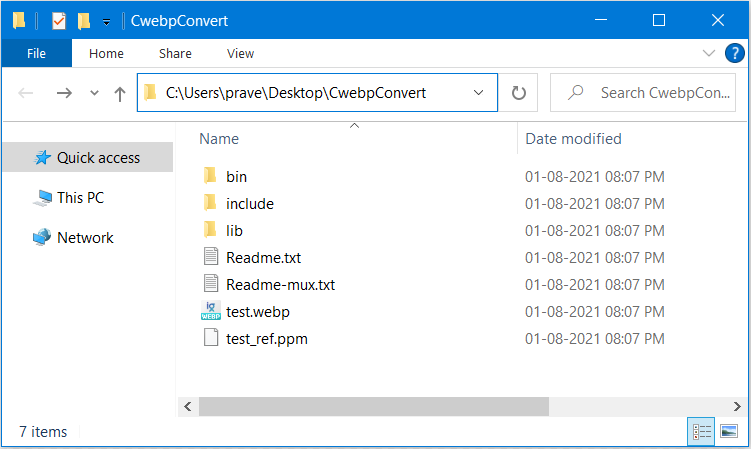
Now, open the bin subfolder present inside the CwebpConvert folder. Inside the bin folder, you would find the various application files. Look for dwebp.exe.
Press and hold the Shift key and then right click the dwebp.exe file and select Copy as path from the context menu.

Open the Notepad and paste the path in the notepad window and remove the opening and closing quotes.
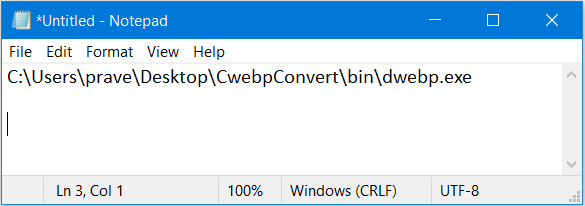
Step 3
Create a new folder on your desktop and name it Photos and move all your WebP images inside this folder.
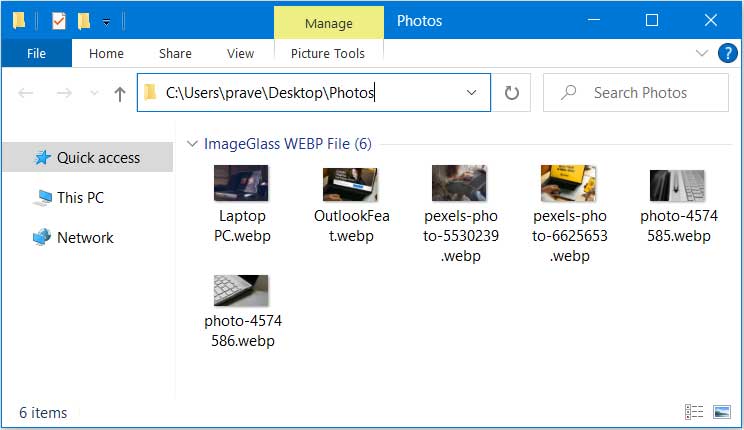
Now press and hold the Shift key and right click on the Photos folder and select Copy as Path from the context menu. Paste the path in the notepad window.

Step 4
Search for Windows PowerShell app in the taskbar search box. Right Click and select Run as Administrator to open PowerShell with elevated privileges.
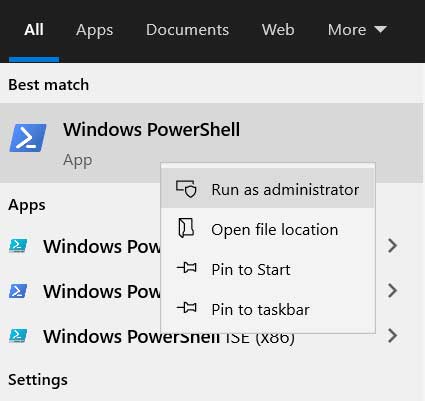
Copy the following code in a separate notepad window.
$dir = "C:\Users\prave\Desktop\Photos"
$images = Get-ChildItem $dir
foreach ($img in $images) {
$outputName = $img.DirectoryName + "\" + $img.BaseName + ".JPG"
C:\Users\prave\Desktop\CwebpConvert\bin\dwebp.exe $img.FullName -o $outputName }In the above code, replace the path in the first line with the path of your Photos folder containing the WebP images. In the last line replace the path with the path of your dwebp.exe file, you had copied in the notepad.
After modifying the code copy it and paste the code in the PowerShell window by pressing Ctrl + V and then hit Enter key.

PowerShell would start converting the WebP image files, one by one. The Photos folder would now contain copies of all the WebP images but in the JPG format. Right Click anywhere inside the Photos folder and then select Group By > Type to separate the JPG and WebP images.
Convert WebP Images using Online Image Convertor Tools
You can also use any online image convertor tools to convert WebP images. You can use one such app called Squoosh to convert your images. Visit squoosh.app to open their online image convertor in your browser. Squoosh is an open source project and the source is available on Github.
NOTE: Please be aware that the link to the Squoosh app is being provided for your convenience and does not constitute an endorsement, approval or sponsorship by us. Proceed only, if you are willing to trust this site.
Click on the + image link at the center and select the location of the WebP image, you need to convert.

On the right side click on the dropdown under the label Compress and select Browser JPEG or any other file format.
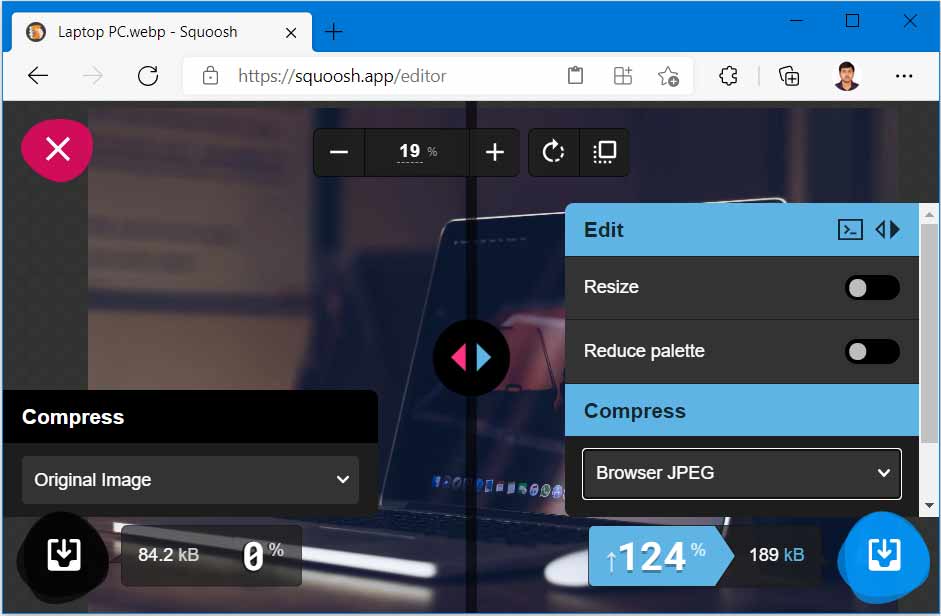
Click on the download link in the lower right corner of the browser window to download the JPEG image on your desktop.
Use the Paint App in Windows 10
The Paint app on Windows 10 PC supports WebP images. You can open WebP images in the Paint app, in editing mode.
To open the image in Paint, right click on the WebP image file and then select Open with > Paint in the context menu. Alternatively, You can simply drag and drop the WebP image file in the Paint window.
After the WebP image is open in the Paint app, click on File > Save As. In the Save As dialog select JPEG(*.jpg;*.jpeg;*.jpe;*,jfif) from the dropdown next to Save as Type.
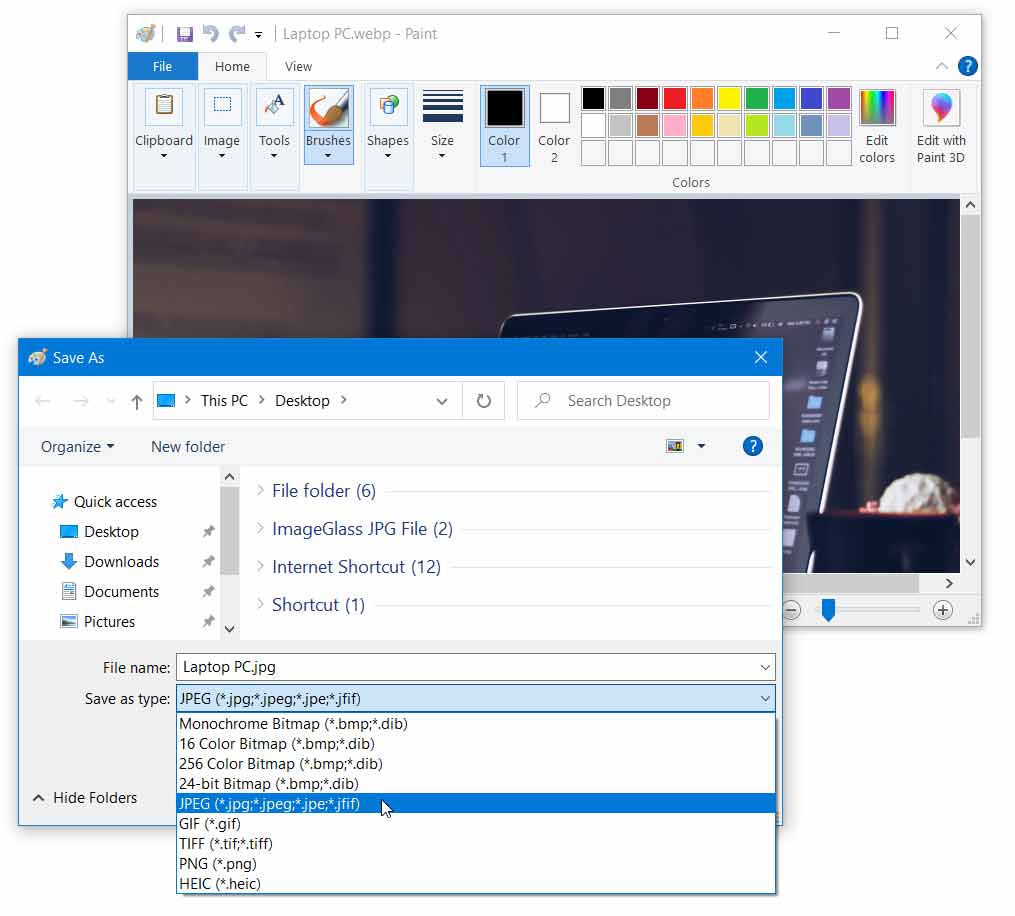
Click on Save to save the file. You may get a notification alerting you about the loss of transparency. Click on Yes to save the file.
Other methods
There are plenty of apps, programs and tools available online for converting your images. You can also use browser extensions in Chrome, Edge and Firefox for converting your images. All these online apps, require you to upload your images or send URLs to their servers.
Use these apps at your own risk and avoid uploading or sharing images on untrustworthy sites, if you are concerned about privacy.

